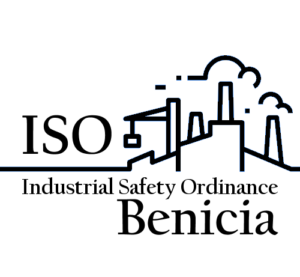The rest of the story on air monitoring in Benicia
In Part 1 of this series, we explored the many health risks and costs of air pollution in Benicia, including premature deaths, hospitalizations and respiratory symptoms including asthma in adults and children. Today we will take a look at air monitoring – and the lack of it – in Benicia.
The city of Benicia and its residents need more information about our air. For too long, voices have called for significant air monitoring, with little to no effect. Valero Refinery contributes heavily to the pollution in the air we breathe, yet it is dragging its feet in addressing the monitoring problem.
Currently, Valero has submitted a proposed plan for fence line air monitoring to the Bay Area Air Management District (BAAQMD, or the Air District). But Valero’s plan would not include monitoring large areas of Benicia, including Southampton residential neighborhoods, schools, and parts of the Industrial Park. These areas are directly west and southwest of the refinery. Valero’s plan also does not monitor the numerous hilltops and hills and valleys throughout Benicia. Valero’s air monitoring proposal is woefully inadequate and has drawn numerous other criticisms in formal submissions to the Air District. The proposal lacks transparency and community input and leaves too many issues unaddressed, awaiting decisions after Air District review. Valero’s plan must not be approved in its present form.
Valero’s fence line monitoring proposal does not adequately address “rare conditions.” In Benicia, these conditions include windless days or nights that occur during summer months, and prevailing wind patterns that often blow east-to-west in fall and winter, bringing pollution directly into Benicia’s air space. A prime example of a recent “rare circumstance” demonstrates why a Monitoring Plan must address circumstances considered “unusual.” On May 5, 2017 a sudden total loss of power from PG&E triggered an immediate, unexpected shutdown of the entire refinery, which caused instantaneous, unmitigated flaring and burn-off of fuels within all of Valero’s processing units. Evacuations and shelter-in-place orders were given to persons living and working around the refinery boundaries, including children at two Benicia elementary schools, Robert Semple and Matthew Turner. Little was known about air quality in nearby businesses, schools and neighborhoods in real time on that day – or since.
Also, Valero’s plan only addresses in part the community’s right and desire to know what is in Benicia’s air on a real-time basis. The Air District’s Rule 12-15 only calls for fence line perimeter monitoring with a minimum requirement to sample a few of the notable refinery gases. Valero’s proposed plan allows for a minimum of 75 percent reliability rate for the monitoring system – it should be 90%, which is the reliability rate required of other Bay Area refineries.
Valero says fence line monitoring results will be available in near real-time to the public on a website hosted by a third party. But Valero’s Plan is vague about procedures for displaying data on the public website and states that all will be “refined” at a future date. What restrictions to the public will there be, and will there be community involvement? Answers should all be clear PRIOR to the Plan’s approval, not after – with decisions made by whom, and when?
Let’s remember where we are at this point in time discussing air monitoring in Benicia. Do we really need to be reminded of all the dedicated efforts over the past 18-plus years of voluntary service by Good Neighbor Steering Committee (GNSC) members? Despite the clear requirement expressed in two separate agreements (in 2003 and in 2008), Valero has neither installed the purchased fence line monitoring equipment nor voluntarily and actively supported establishment of a permanent monitoring station in the community. The assembled state-of-the-art array of monitors required by the agreements now remain “off limits” and mothballed on Valero property.
Valero’s proposed air monitoring “plan” is only a continuation of the successful corporate delay and deflection of the community’s right to know what is in our air – what we can see and can’t see.
We don’t know what is in the air, and Benicia has asthma rates much higher than the state average. Benicia needs air monitors NOW, and state/regional regulations will be slow in coming.
In Part 3, we will take a closer look at the good reasons for Benicia to adopt an Industrial Safety Ordinance (ISO).
Benicia ISO Working Group







This is no help at all. What should they monitor? What constitutants? Where?
BAAQMD monitors the air plus one other group. The ISO does not. Look at BAAQMD intentions for late 2018 and 2019. That will answer all your questions. This is just CBR “Junior” and pure anti Valero. What about AmPorts. Big law suit there. This time I do believe Valero will no longer be Mr. Nice Guy and they should not. Sit down with Valero and work out a monitoring system. I think you will find them very open. But you do not want that it defeats your Totalitarian and Authoritarian Socialist approach. You apparently do not believe in “OPEN GOVERNMENT”. Yes you are a working group with one goal in mind GET RID OF VALERO and elect only Democrat Socialist in non-partisan elections. Very Bernie Sanders approach.. It is all big business’ fault. No its a group of Socialist fault.